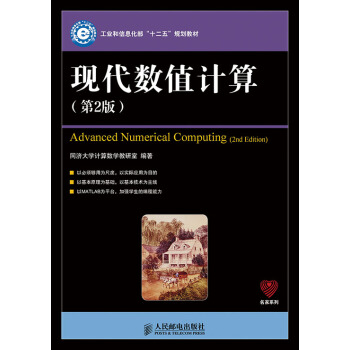![粒子物理学标准模型导论(第2版) [An Introduction to the Standard Model of Particle Physics]](https://pic.tinynews.org/10104522/7145a346-f1b9-4590-9b59-fc4b360c1007.jpg)

具体描述
内容简介
《粒子物理学标准模型导论(第2版)》从介子和夸克的电磁作用和弱相互作用开始,讲到了夸克的强相互作用,内容层层深入。介绍标准模型的同时,作者非常注重选材的可进阶性,方便读者更深入的研读。内页插图
目录
Preface to the second editionPreface to the first edition
Notation
1 The particle physicists view of Nature
1.1 Introduction
1.2 The construction of the Standard Model
1.3 Leptons
1.4 Quarks and systems of quarks
1.5 Spectroscopy of systems of light quarks
1.6 More quarks
1.7 Quark colour
1.8 Electron scattering from nucleons
1.9 Particle accelerators
1.10 Units
2 Lorentz transformations
2.1 Rotations, boosts and proper Lorentz transformations
2.2 Scalars, contravariant and covariant four-vectors
2.3 Fields
2.4 The Levi-Civita tensor
2.5 Time reversal and space inversion
3 The Lagrangian formulation of mechanics
3.1 Hamiltons principle
3.2 Conservation of energy
3.3 Continuous systems
3.4 A Lorentz covariant field theory
3.5 The Klein-Gordon equation
3.6 The energy-momentum tensor
3.7 Complex scalar fields
4 Classical electromagnetism
4.1 Maxwells equations
4.2 A Lagrangian density for electromagnetism
4.3 Gauge transformations
4.4 Solutions of Maxwells equations
4.5 Space inversion
4.6 Charge conjugation
4.7 Intrinsic angular momentum of the photon
4.8 The energy density of the electromagnetic field
4.9 Massive vector fields
5 The Dirac equation and the Dirac field
5.1 The Dirac equation
5.2 Lorentz transformations and Lorentz invariance
5.3 The parity transformation
5.4 Spinors
5.5 The matrices
5.6 Making the Lagrangian density real
6 Free space solutions of the Dirac equation
6.1 A Dirac particle at rest
6.2 The intrinsic spin of a Dirac particle
6.3 Plane waves and helicity
6.4 Negative energy solutions
6.5 The energy and momentum of the Dirac field
6.6 Dirac and Majorana fields
6.7 The E ] ] m limit, neutrinos
7 Electrodynamics
7.1 Probability density and probability current
7.2 The Dirac equation with an electromagnetic field
7.3 Gauge transformations and symmetry
7.4 Charge conjugation
7.5 The electrodynamics of a charged scalar field
7.6 Particles at low energies and the Dirac magnetic moment
8 Quantising fields: QED
8.1 Boson and fermion field quantisation
8.2 Time dependence
8.3 Perturbation theory
8.4 Renornmalisation and renormalisable field theories
8.5 The magnetic moment of the electron
8.6 Quantisation in the Standard Model
9 The weak interaction: !ow energy phenomenology
9.1 Nuclear beta decay
9.2 Pion decay
9.3 Conservation of lepton number
9.4 Muon decay
9.5 The interactions of muon neutrinos with electrons
10 Symmetry breaking in model theories
10.1 Global symmetry breaking and Goldstone bosons
10.2 Local symmetry breaking and the Higgs boson
11 Massive gauge fields
11.1 SU(2) symmetry
11.2 The gauge fields
11.3 Breaking the SU(2) symmetry
11.4 Identification of the fields
12 The Weinberg——Salam electroweak theory for leptons
12.1 Lepton doublets and the Weinberg-Salam theory
12.2 Lepton coupling to the W
12.3 Lepton coupling to the Z
12.4 Conservation of lepton number and conservation of charge
12.5 CP symmetry
12.6 Mass terms in : an attempted generalisation
13 Experimental tests of the Weinberg——Salam theory
13.1 The search for the gauge bosons
13.2 The W bosons
13.3 The Z boson
13.4 The number of lepton families
13.5 The measurement of partial widths
13.6 Left-right production cross-section asymmetry and lepton decay symmetry of the Z boson
14 The electromagnetic and weak interactions of quarks
14.1 Construction of the Lagrangian density
14.2 Quark masses and the Kobayashi-Maskawa mixing matrix
14.3 The parameterisation of the KM matrix
14.4 CP symmetry and the KM matrix
14.5 The weak interaction in the low energy limit
15 The hadronic decays of the Z and W bosons
15.1 Hadronic decays of the Z
15.2 Asymmetry in quark production
15.3 Hadronic decays of the W
16 The theory of strong interactions: quantum chromodynamics
16.1 A local SU(3) gauge theory
16.2 Colour gauge transformations on baryons and mesons
16.3 Lattice QCD and asymptotic freedom
16.4 The quark-antiquark interaction at short distances
16.5 The conservation of quarks
16.6 Isospin symmetry
16.7 Chiral symmetry
17 Quantum chromodynamics: calculations
17.1 Lattice QCD and confinement
17.2 Lattice QCD and hadrons
17.3 Perturbative QCD and deep inelastic scattering
17.4 Perturbative QCD and e+e- collider physics
18 The Kobayashi-Maskawa matrix
18.1 Leptonic weak decays of hadrons
18.2 |Vud| and nuclear decay
18.3 More leptonic decays
18.4 CP symmetry violation in neutral kaon decays
18.5 B meson decays and B,B mixing
18.6 The CPTtheorem
……
精彩书摘
5、The Dirac equation and the Dirac fieldThe Standard Model is a quantum field theory.In Chapter 4 we discussed the classical electromagnetic field.The transition to a quantum field will be made in Chapter 8.In this chapter we begin our discussion of the Dirac equation,which was invented bv Dirac as an equation for the relativistic quantum wave function of a single electron.However,we shall regard the Dirac wave function as a field.Which will subsequently be quantised along with the electromagnetic field.The Dirace quationwillberegardedasafieldequation.Thetransitiontoaquantumfieldtheory
iS called second quantisation.The field。like the Dirac wave function.is complex.W_e shall show how the Dirac field transforms under a Lorentz transformation.And find a Lorentz invariant Lagrangian from which it may be derived.
On quantisation,the electromagnetic fields A(x),Fv(x)become space-and time.dependent 0perators.The expectation Values of these operators in the environ- ment described by the quantum states are the classical fields.The Dirac fields(x) alSO become space-and time.dependent operators on quantisation.However,there are no corresponding measurable classical fields.This di骶rence reflects the Pauli exclusion principle,which applies to fermions but not to bosons.In this chapter and in the following two chapters,the properties of the Dirac fields as operators are rarely invoked:for the most part the manipulations proceed as if the Dirac fields were ordinary complex functions,and the fields Can be thought of as single-particle Dirac wave functions.
5.1 The Dirac equation
Dirac invented his equation in seeking to make Schr6dingerS equation for an elec-tron compatible with special relativity.
前言/序言
In the eight years since the first edition, the Standard Model has not been seriously discredited as a description of particle physics in the energy region ([2 TeV) so far explored. The principal discovery in particle physics since the first edition is that neutrinos carry mass. In this new edition we have added chapters that extend the formalism of the Standard Model to include neutrino fields with mass, and we consider also the possibility that neutrinos are Majorana particles rather than Dirac particles.The Large Hadron Collider (LHC) is now under construction at CERN. It is expected that, at the energies that will become available for experiments at the LHC (~20 TeV), the physics of the Higgs field will be elucidated, and we shall begin to see physics beyond the Standard Model. Data from the B factories will continue to accumulate and give greater understanding of CP violation. We are confident that interest in the Standard Model will be maintained for some time into the future.
Cambridge University Press have again been most helpful. We thank Miss V. K.Johnson for secretarial assistance. We are grateful to Professor Dr J. G. K6rner for his corrections to the first edition, and to Professor C. Davies for her helpful correspondence.
用户评价
在阅读的过程中,我数次停下来,反复咀嚼作者对某些关键概念的阐述。特别是关于“量子场论”的介绍,虽然我对这个领域知之甚少,但作者通过生动的比喻和层层递进的解释,让我对其基本思想有了一个初步的认识。我感觉这本书并非仅仅是将已有的知识堆砌,而是真正地在引导读者去理解那些晦涩概念的本质。他并没有回避一些数学上的细节,但会用一种恰当的方式呈现,使其更容易被读者接受。这种既尊重科学的严谨性,又兼顾读者理解能力的写作风格,让我对作者的专业素养和教学能力赞叹不已。
评分这本书给我最大的感受是,物理学并非是冰冷的公式和抽象的概念,而是对自然界最深刻的敬畏和最精妙的洞察。作者用一种近乎诗意的语言,描绘了微观粒子世界的奇妙景象,让我感受到了宇宙的和谐与秩序。在理解了标准模型之后,我似乎能够以一种全新的视角去观察周围的世界,从一片落叶到一颗恒星,都能感受到其中蕴含的粒子物理学原理。我感觉自己仿佛被赋予了“透视眼”,能够看到物质背后更深层次的秘密。这本书不仅仅是一本教科书,更是一次启迪,一次对宇宙奥秘的致敬,它让我更加热爱科学,也更加热爱这个充满奇迹的宇宙。
评分阅读这本书的过程,更像是一场智力上的探险,我感觉自己仿佛置身于一个由无数精密齿轮构成的庞大机械装置之中,而标准模型就是这个装置的蓝图。作者的叙述风格有一种独特的感染力,他能够将那些听起来枯燥乏味的公式和定理,转化为生动的故事和有趣的类比。比如,当他在描述夸克禁闭现象时,他可能会用一个形象的比喻来解释为什么我们永远无法单独观察到单个夸克,这让我这种非专业读者也能够茅塞顿开。我特别欣赏他在讲解粒子性质时所展现出的细致入微,从电荷、自旋到质量,每一个属性都被赋予了清晰的物理意义,并且与标准模型中的其他粒子和相互作用紧密联系起来。我能感受到作者在组织材料上的良苦用心,逻辑链条非常清晰,从最基础的费米子和玻色子,逐步深入到弱电统一、量子色动力学等更复杂的概念,让我在不知不觉中构建起了一个完整的知识框架。
评分这本书的封面设计着实让我眼前一亮,一种深邃而充满科技感的蓝紫色调,搭配上简洁但信息量十足的标题,立刻就吸引住了我的目光。我是一个对宇宙万物起源和基本构成充满好奇的爱好者,而粒子物理学的标准模型无疑是解答这些终极问题的关键钥匙。尽管我并非物理学专业出身,但从这本书的装帧和标题中,我能感受到它试图以一种更易于理解的方式,将那些抽象而复杂的概念传递给读者。封面上的那些抽象的符号和线条,我猜想它们可能代表着粒子、相互作用,甚至是宇宙最基础的织锦。我期待这本书能够像一本精心策划的科学纪录片一样,用引人入胜的语言和恰当的比喻,将标准模型这个庞大的理论体系徐徐展开,让我能够窥探到微观世界的奥秘,理解那些构成我们现实世界的“积木”是如何运作的。我尤其希望它能在不牺牲科学严谨性的前提下,让非专业读者也能感受到粒子物理学的魅力,激发进一步探索的欲望。
评分这本书的价值,不仅在于它对标准模型理论的详细阐述,更在于它所激发出的思考。在读到关于标准模型局限性的部分时,我感到既遗憾又兴奋。标准模型虽然取得了巨大的成功,但它并非终极理论,仍有许多未解之谜,比如暗物质、暗能量、中微子质量的来源等等。作者并没有止步于已有的成就,而是引领读者一起展望未来,思考下一代物理学理论可能的发展方向。这种勇于面对未知、不断探索的精神,正是科学最宝贵的财富。这本书让我意识到,我们对宇宙的认识仍然是一个不断发展的过程,而我,作为一个热情的读者,也成为了这个过程中的一份子。
评分这本书所传递的不仅仅是关于粒子和力的知识,更是一种看待世界的方式。作者在讲解时,常常会跳出纯粹的理论模型,将其与我们所能观察到的宇宙现象联系起来。例如,在讨论宇宙的演化时,他会适时地引入标准模型中的粒子和相互作用,解释它们在早期宇宙中的作用,以及如何导致了今天我们所看到的物质世界的形成。这种宏观与微观的交织,让我觉得粒子物理学并非孤立存在,而是与整个宇宙的壮丽图景息息相关。我开始用一种更宏观的视角去审视那些微小的粒子,也用一种更微观的视角去理解那些宏大的宇宙现象,感觉自己的认知边界得到了极大的拓展。
评分这本书让我深刻体会到,科学并非遥不可及的象牙塔,而是人类智慧不断挑战极限、探索未知的壮丽史诗。作者在书中对于标准模型历史发展脉络的梳理,让我看到了那些伟大的科学家们是如何一步步拨开迷雾,最终建立起这个深刻理解物质世界运行规律的理论框架的。我仿佛能听到那些在实验室里激烈的讨论,看到他们在黑板上奋笔疾书的身影,感受到他们面对未知时的那种既兴奋又谨慎的心情。尤其是当他谈到一些实验验证,比如希格斯玻色子的发现时,那种科学的严谨性、实验的精妙以及理论的预见性,都让我心潮澎湃。我感觉自己不仅仅是在学习一个理论,更是在参与一场跨越时代的思想盛宴,感受科学精神的薪火相传,以及人类认识宇宙的步伐从未停歇。
评分这本书在解释粒子物理学的基本概念时,采用了非常人性化的方式。我特别喜欢它对“对称性”这一概念的引入和贯穿。在标准模型中,对称性扮演着至关重要的角色,而作者能够用清晰易懂的语言,解释为什么它如此重要,以及如何在不同粒子和相互作用中体现出来。从洛伦兹对称性到规范对称性,每一个概念的引入都伴随着恰当的解释和举例,让我这个非物理科班出身的读者也能够逐步理解其深层含义。我感觉这本书不仅仅是在教授知识,更是在培养读者的物理直觉,让读者能够从更深层次上理解粒子物理学的内在逻辑和美感。这种循序渐进、由浅入深的讲解方式,让我觉得学习物理学不再是一件令人望而却步的事情。
评分作为一个对宇宙现象充满好奇心的读者,我对书中关于粒子相互作用的讲解尤为关注。强相互作用、弱相互作用、电磁相互作用和引力,这四种基本力的描绘,让我仿佛看到了宇宙中最原始、最本质的“力量之舞”。作者不仅解释了它们各自的特点和作用范围,更重要的是,他将它们巧妙地融入到了标准模型这个整体框架中,展现了它们之间的内在联系和统一性。特别是关于弱相互作用在原子核衰变等现象中的关键作用,以及电磁相互作用在我们日常生活中无处不在的体现,都让我印象深刻。我期待能够通过这本书,更深入地理解为什么宇宙能够形成我们现在看到的各种物质和结构,理解那些肉眼看不见的微观粒子是如何通过这些基本力塑造着宏观世界的。
评分我尤其欣赏书中关于“夸克模型”和“轻子模型”的讲解。作者清晰地梳理了不同代夸克和轻子的性质,以及它们是如何通过强力和弱力相互作用的。我仿佛看到了一个由不同“味”和“色”的粒子组成的微观世界,它们之间有着错综复杂的联系。更让我着迷的是,作者将这些微观粒子与我们所熟悉的宏观物质联系起来,比如质子和中子是由夸克组成的,而电子则是一个轻子。这种从微观到宏观的过渡,让我对物质世界的构成有了更深刻的理解,也让我对“万物同源”的哲学思想有了更具体的感知。
评分整体而言,这本书不错:起点低,内容广,价格低,适合初学者。有一定基础的人就不需要看了。
评分影印版图书质量不如原版书, 但便宜.
评分很好
评分参考书,还没看。。。。。。
评分好
评分not bad.......
评分影印版图书质量不如原版书, 但便宜.
评分很好很详细,打算抽时间仔细看看。
评分影印版图书质量不如原版书, 但便宜.
相关图书
本站所有内容均为互联网搜索引擎提供的公开搜索信息,本站不存储任何数据与内容,任何内容与数据均与本站无关,如有需要请联系相关搜索引擎包括但不限于百度,google,bing,sogou 等
© 2026 book.tinynews.org All Rights Reserved. 静思书屋 版权所有

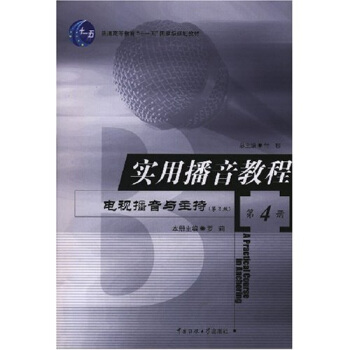
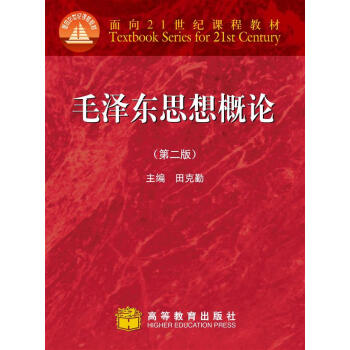
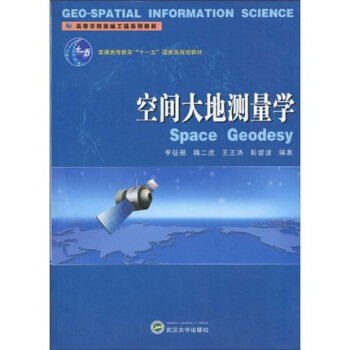

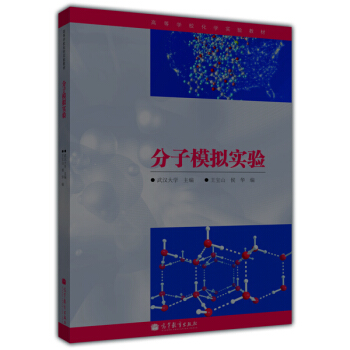
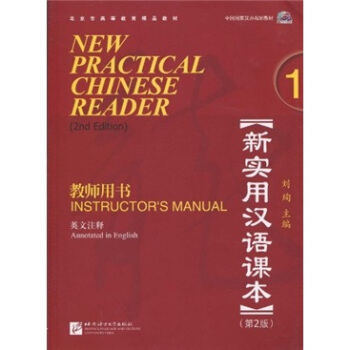
![高等院校新概念医学英语系列教材:高级医学英语写作教程 [An Advanced Writing Course] pdf epub mobi 电子书 下载](https://pic.tinynews.org/10938155/539ffe88Nd509afc4.jpg)

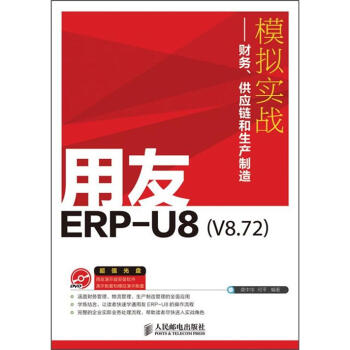
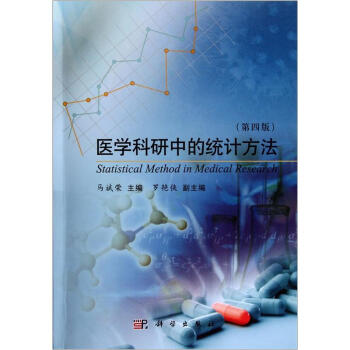
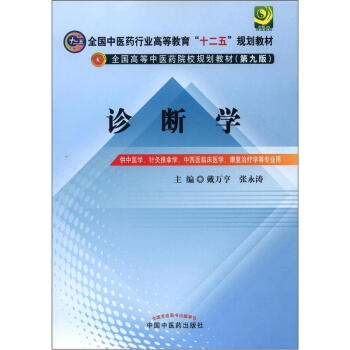
![博雅汉语·准中级加速篇1(第2版)(附MP3光盘1张)/普通高等教育“十一五”国家级规划教材 [Boya Chinese Quasi-Intermediate Ⅰ(Second Edition)] pdf epub mobi 电子书 下载](https://pic.tinynews.org/11139912/rBEGF1DTse4IAAAAAARmUnihl5UAABDugOnYwsABGZq825.jpg)


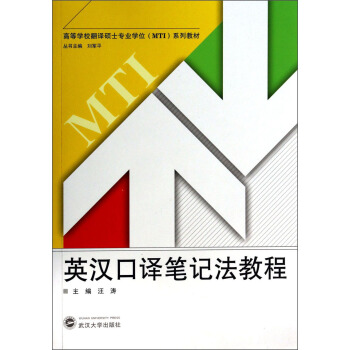
![医学科研方法学(第2版)/国家卫生和计划生育委员会“十二五”规划教材 [Research Mehodology in Medicine] pdf epub mobi 电子书 下载](https://pic.tinynews.org/11462070/538707bbN86edb705.jpg)

